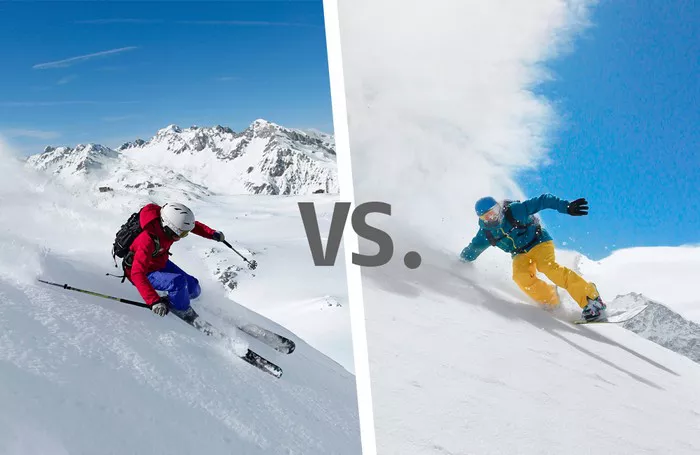In the realm of winter sports, skiing and snowboarding stand as two dominant and exhilarating activities, each with its unique charm and appeal. As enthusiasts hit the slopes in search of adventure and adrenaline rushes, the debate between skiing and snowboarding continues to ignite passionate discussions. Whether you’re a seasoned veteran or a novice contemplating your first foray into the snowy wilderness, understanding the disparities between skiing and snowboarding is crucial. In this comprehensive comparison, we delve into the intricacies of both disciplines, examining everything from technique and equipment to brands and prices, to help you make an informed decision.
Technique and Skill
One of the most fundamental distinctions between skiing and snowboarding lies in their respective techniques. Skiing involves navigating the slopes with two separate skis attached to the feet, offering independent control over each leg. This allows skiers to execute maneuvers such as parallel turns and carving, emphasizing speed and precision. In contrast, snowboarding entails riding down the slopes on a single snowboard, with both feet firmly secured to the board. Snowboarders rely on subtle shifts in weight and body positioning to maneuver, executing fluid movements such as carving and riding switch.
The learning curves for skiing and snowboarding vary, with some finding skiing easier to pick up initially due to the familiarity of using separate legs for movement. However, snowboarding can offer a smoother progression for some individuals once the fundamentals are grasped, as it involves fewer moving parts and a more natural stance.
Equipment
The equipment required for skiing and snowboarding differs significantly, reflecting the distinct techniques employed in each sport. Skiers typically use a pair of skis, along with bindings that secure their boots to the skis. Ski poles aid in balance and propulsion, assisting with turns and traversing flat terrain. Additionally, skiers wear specialized boots designed to provide ankle support and control.
On the other hand, snowboarders utilize a single snowboard, which can vary in length and shape depending on the rider’s preferences and riding style. Bindings fasten the snowboarder’s boots to the board, allowing for fluid movements and precise control. Snowboard boots are similar to skiing boots but typically feature softer, more flexible constructions to facilitate maneuverability.
Recommended Brands and Prices
When it comes to selecting skiing or snowboarding equipment, choosing reputable brands known for quality and performance is paramount. Here are some recommended brands along with approximate prices for both skiing and snowboarding gear:
Skiing:
Rossignol: Renowned for its innovation and craftsmanship, Rossignol offers a wide range of skis suitable for various skill levels and terrain types. Prices for Rossignol skis typically range from $300 to $800, depending on the model and features.
Atomic: With a focus on precision engineering and cutting-edge technology, Atomic produces high-performance skis favored by professionals and recreational skiers alike. Prices for Atomic skis start at around $400 and can exceed $1000 for advanced models.
Volkl: Known for its durable construction and superior handling, Volkl skis are popular among intermediate and expert skiers seeking reliable performance. Prices for Volkl skis typically range from $500 to $900, catering to a range of budgets.
Snowboarding:
Burton: As a pioneer in the snowboarding industry, Burton offers a diverse lineup of snowboards renowned for their durability and versatility. Prices for Burton snowboards start at approximately $300 for entry-level models and can reach $800 or more for premium designs.
Lib Tech: Renowned for its environmentally conscious practices and innovative designs, Lib Tech produces snowboards known for their performance and sustainability. Prices for Lib Tech snowboards typically range from $400 to $700, reflecting their premium quality.
Never Summer: With a focus on handcrafted precision and durability, Never Summer snowboards are favored by riders seeking reliable performance in various snow conditions. Prices for Never Summer snowboards start at around $400 and can exceed $600 for advanced models.
Conclusion
In the debate between skiing and snowboarding, there is no definitive answer as to which is superior, as both offer unique experiences and challenges. Whether you prefer the precision and speed of skiing or the fluidity and style of snowboarding, the decision ultimately boils down to personal preference and individual goals. By understanding the differences between skiing and snowboarding, along with considering factors such as technique, equipment, and brands, you can embark on your winter sports journey with confidence and enthusiasm. So, grab your skis or strap on your snowboard, and prepare for an unforgettable adventure on the slopes.

